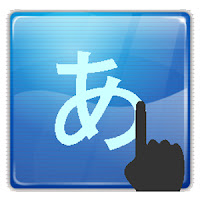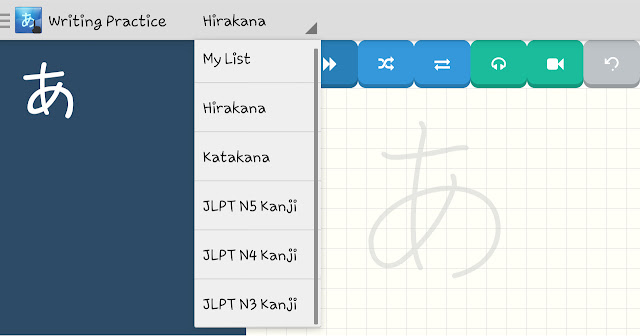Hajimemasho! – My Japanese learning journey – Part 3
Week 4, 5 & 6
At this
point, I could, as always, talk about the different hiragana characters I’m
learning in class and bore your socks off. But I’ve already bored my own socks
off writing about it, so I’ll spare you this once.
Japanese is
a lot of memorisation work. Learning the characters and the grammar is one
thing, but consistency is key. Practice makes…not really perfect, at least in
my case. I’m very prone to ten minute fevers, where I charge into something enthusiastically
and then get bored after a while. Of course, I have bigger dreams for where
Japanese can take me, so I better put in the work.
I tried to
use my lunch hours to do some revision. Lunch got in the way.
I tried revising
before bedtime. There was anime. Need I say more?
My salvation
came through my work colleague, who had already completed pre-advanced. She
willingly became my practice buddy and unwillingly also got
roped into becoming my insult buddy. As in, I practice by insulting her. It’s
therapeutic. Insults are so much more fulfilling when you’ve learnt how to
combine particles with vocabulary and grammar.
She also
recommended a few different mobile apps for practice and I reviewed them so you
don’t have to—you’re welcome! Do note, this is my personal opinion. What doesn’t
work for me won’t necessarily be true for you.
This app is
great for those who have some command of Japanese, but it isn’t for beginners. It
claims to help one learn the characters, vocabulary and different expressions
for numbers, dates and time, and after some testing, it actually does. But
there’s little explanation for beginners on why the expressions are different or
unique and the instructions are confusing. If you’ve already done the basic
Japanese course and am hoping to practice on your own, then this is the app for
you.
An utter
waste of my time. I thought that this would help me practice my characters, but
all it really did was display them. Every time I touched the blank screen,
hoping to trace out the words, it’ll just fast-forward to the completed
character. If I waited and watched, it’ll trace out the character, stroke by
stroke. A printout would have served me better.
I’ve been
using this app the most during my daily commute…well, maybe not during the
morning because I’m not quite awake yet. It’s comprehensive for beginners who are
memorising the characters. First, it’ll show you the character, how to draw it,
and gradually increases the difficulty. It reminds me of art class, where there
are dots to follow. The dots, which represent where you began writing, gradually
decreases until they’re all gone and you’re made to write the character from
memory.
Be warned,
this app really forces you to improve
your handwriting. It’s based on a point system. For every wrong stroke, it
deducts around 10 points. For every correct answer, you get 5 points. It’s frustrating,
but effective. Even for myself, if you happen to veer off by even the tiniest
bit (by now, あ is the easiest character to write, but also the
easiest to get wrong), it registers as a wrong answer.
 |
| A demonstration of the stroke |
 |
| See what I mean by getting the stroke off just a little? |
The developers of this app also have a few
different Japanese apps, including Katakana and Japanese vocabulary, so you can
take your time learning them all.
I find this
app works best when paired with Hiragana
– Learn Japanese. If the earlier app helps you memorise, this app helps you
apply. It helps to reinforce the
characters and applications of the Japanese vocabulary, and even has some neat
memory tricks that helps make the character association a little stronger. The downside
to both apps is that it does require a bit of time. Two daily commutes aren’t quite
enough to cover the daily goals.
If you want to make your Japanese
studies a little easier, a combination of classes, homework and practice apps should
make your journey a little easier. I know it did for me. On Week 5, I scored a
little higher in my dictation than I normally do.
On a side
note back to classes, I mentioned replacement classes in my earlier post
(shameless plug here), but I only paid attention to it for Week 4 as I was
going to miss the class coz of travel. For my school, if you can’t attend a
lesson, there are two options: you can attend the same week’s lesson conducted
on a different day, or there’s a cram session on the following week. Example:
if you’ll miss Week 4 on Saturday (like I did), you can attend Week 4 on Tuesday
instead or come to class half an hour earlier on Week 5 and cram the previous week’s
lesson with Sensei.
I had no
choice but to attend the Tuesday class. My classes are typically held on
Saturday afternoons; it gives me just enough time to recover from the weekday
grind and rush through my homework. I am a proud, model procrastinator.
For those of
you who are studying part-time after work, I salute you. Class immediately after
work was tortuous. I had to flee the moment work ended and spent the entire
journey cursing slow walkers and idiots who didn’t know how to stand on the
left of escalators. By the time I got to class, I was hungry (completely forgot
about dinner) and visibly irritated. The only chipper person was Sensei (different
from my usual) who seemed familiar with a sea of moody after-work adults.
Choose your classes carefully.




















No Comment to " Hajimemasho! – My Japanese learning journey – Part 3 "